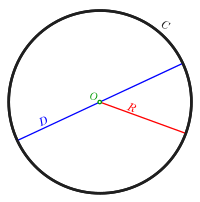
Photo from wikipedia
PURPOSE To compare the differences between the apparent and actual chord μ. METHODS In this prospective, comparative, non-randomized, and non-interventional study, imaging examinations using Pentacam and the HD Analyzer were… Click to show full abstract
PURPOSE To compare the differences between the apparent and actual chord μ. METHODS In this prospective, comparative, non-randomized, and non-interventional study, imaging examinations using Pentacam and the HD Analyzer were performed in the same room under the same scotopic conditions. The inclusion criteria were patients aged 21-71 years, able to provide informed consent, myopia up to 4D, and anterior topographic astigmatism up to 1D. Patients using contact lenses, those with previous eye diseases or surgeries, corneal opacities, corneal tomographic changes, or suspected keratoconus were excluded. RESULTS Altogether, 116 eyes of 58 patients were analyzed. The patients' mean age was 30.69 (±7.85) years. In the correlation analyses, Pearson's correlation coefficient of 0.647 indicates a moderate positive linear relationship between apparent and actual chord μ. The mean actual and apparent chord μ were 226.21 ± 128.53 and 278.66 ± 123.90 μm, respectively, with a mean difference of 52.45 μm (p=0.01). The analysis of mean pupillary diameter resulted in 5.76 mm using the HD Analyzer and 3.31 mm using the Pentacam. CONCLUSIONS We found a correlation between the two measurement devices, and even though we found considerable differences, both can be used in daily practice. Given their differences, we should respect their peculiarities as well.
Journal Title: Arquivos brasileiros de oftalmologia
Year Published: 2023
Link to full text (if available)
Share on Social Media: Sign Up to like & get
recommendations!